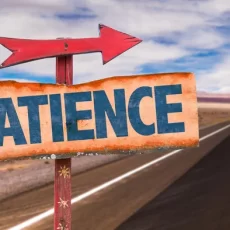India has set a blistering pace during Modi 2.0. Or the second term of Prime Minister Narendra Modi. Within six months, a series of landmark changes have been implemented including the lifting of Article 370 to abolish the special status of Kashmir and integrate into the Indian union; the Anti-Terror law to charge individuals for terrorism; banning Triple Talaak or instant divorce; merger of ten state owned banks; the Ayodhya verdict and its wide acceptance to end decades long dispute over construction of the Ram Temple.
To understand the current Indian political rollercoaster, the best course is to know about what happened in the five years after the 2014 general elections. This is when Narendra Modi came to power and BJP (Bharatiya Janata Party) took over from the Congress that ruled India for most of the seven decades after independence. This Modi 1.0 was a Teutonic shift. Happy Ho organizes best Meditation and Tarot classes in Noida and Delhi NCR area in India.
After five years of structural change and some upheavals, Congress mounted an aggressive campaign in 2019. Again. Yes, again. Narender Modi was re-elected the prime Minister of India with a bigger majority than his last election. This Modi 2.0 era comes after a bitter, prolonged and nasty campaign full of insults, innuendos and outright falsehoods.
The usual accusations about mob lynchings, promoting Hindutva, corruption in a deal to buy French fighters for Indian Air Force, among others, were publicized. The 2019 election battle was the nastiest in Indian history with a single aim of the combined opposition: to defeat Modi. But how come Modi won by a greater majority than in 2014?
Because Modi had a clear track record of helping the poorest of the poor with dozens of projects that improved their daily lives.
The BJP countered all these with a well-researched book, ‘Narendra Modi: Creative Disruptor: The Making of New India’ (Konark) by Dr. B. Balashankar, apolitical analyst, journalist and activist. This well-researched and meticulous book answers all allegations with facts and their sources. Political, economic, financial, social and cultural initiatives are well documented for easy reference. The book also looks into the future as well in an engrossing narrative. Written in an easy to digest manner, it commands attention even though the 2019 results are declared. The so-called set-backs of Modi 1.0: demonitisation, GST, aircraft deal, lynching, Hindu extremism et all have been examined and demolished.
After winning in three states to form the government, the Congress started with high hopes of a national victory led by the heir apparent to ‘the royal family’ Rahul Gandhi. He later roped in his sister, Priyanka Gandhi Vadra, to boost his chances in Uttar Pradesh which has 80 seats, the highest number in the parliament.
He launched a spiteful campaign accusing Modi of corruption in buying fighters for the Indian Air Force. The government proved that all proper procedures were followed and also won a case in the Supreme Court in this matter but Gandhi persisted as floated a slogan, “Chowkidar Chor Hai’, the guard is a thief based on Modi’s statement that he is a chowkidar for the people to guard their money. This was turned into a refrain at most of his rallies as he urged the public to join in the shouts. Modi turned it around by re-branding it as ‘Main bhi Chowkidar’ or I am also a guard. The review of this judgement by the Supreme Court has vindicated the government.
The Congress also asked for the number of terrorists killed in the Balakot air strike in Pakistan, challenging the nationalist and security planks of Modi’s campaign. Finally, Rahul came up with Nyay (Justice) Scheme to pay the poorest Rs. 6,000 per month or Rs. 72,000 every year. His slogan, ‘Ab hoga Nyay’ was again countered by Modi by saying this means that up to now the Congress governments could not offer justice and could not remove poverty.
Before the actual counting of votes, the combined opposition challenged the accuracy of the EVMs of the Electronic Voting Machines. Again, the Supreme Court disallowed this allegation.
Towards the end of polling, Modi held a press conference and announced that his party, the BJP was winning the elections with a majority of over 300 seats and went to the Himalayas the meditate. As the results trickled in, the BJP took an early lead and kept it going until it topped the 300 mark to touch 303 in a thumping victory.
What the Congress overlooked was the delivery of the Modi government especially to the poorest in the past five years. Starting with opening a bank account even without any deposit for over 500 million people that enabled them get direct transfer of government subsidy, a low-cost life insurance and free accident insurance.
His campaign for toilets provided 92,000,000 units to end open air defection. The government provided electricity to 23. million homes in 25 states. Similarly, the government provided 60 million gas cylinders to the poor homes to end wood burning. Loans for new start-up without security to help generate jobs, medical cover for 100 million families up to Rs. 500,000, loans to build brick and mortar homes for millions, among dozens of other schemes.
The elite evaluated the Modi government in posh urban homes in Delhi and other mega cities where these schemes did not touch them and concluded that his chances had been reduced for a re-election. But the common people proved them all wrong.
The book ends on an optimistic note: “A new chapter in Indian history has been opened and a billion dreams have been given wings to fly. India is in this crucial phase in history.”





